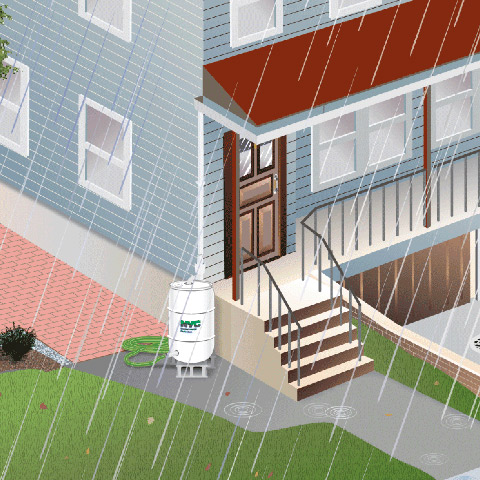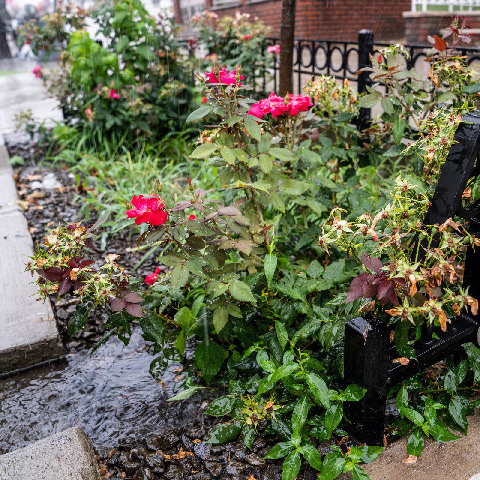
 Environmental Protection311
Environmental Protection311 Search all NYC.gov websites
Search all NYC.gov websites
Prepare for the Storm

The City works collaboratively with a team of weather experts to continuously evaluate the forecast and identify when extreme weather is on the horizon.
When an intense storm is predicted, the City will:
Ensure our infrastructure is prepared to manage maximum stormwater:
- When the forecast calls for rainfall rates at 1 inch per hour or more for an hour, NYC Emergency Management activates the Flash Flood Emergency Plan, triggering operational agencies to prepare city infrastructure for the incoming storm. NYC Emergency Management will complete updates to this plan by August 2022, incorporating lessons learned from the recent storms to ensure a targeted, data driven approach to storm preparation across the city.
- DEP, the Department of Transportation, and the Department of Sanitation (DSNY) will inspect chronic flooding locations and clear debris from catch basins in at-risk locations prior to predicted storms.
- DSNY will re-establish full street sweeping starting on July 5 to proactively clear debris from the roadways, reducing the likelihood that catch basins will become matted over (and therefore unable to drain properly) during heavy rains.
- DEP and the Department of Parks and Recreation will evaluate, and implement where feasible, lowering lake levels in eight parks (Baisley Pond, Van Cortlandt Park, Meadow/Willow Lakes in Flushing Meadows, Harlem Meer in Central Park, Prospect Park Lake, Indian Lake in Crotona, Allison Pond, Wolfe's Pond, and Willowbrook Pond at Victory Blvd) to maximize the ability of the existing infrastructure to absorb and channel stormwater by 2023.
Keep New Yorkers informed about the forecast and communicate directly with high-risk populations in multiple languages, such as basement apartment residents:
- NYC Emergency Management will issue travel advisories and work with City Hall to coordinate travel bans as forecasts warrant and provide messaging specific to basement apartment residents.
- NYC Emergency Management will conduct outreach to coastal and low-lying areas through its community education program, Ready NY.
- This summer, the City will work with trusted community groups and community leaders to cascade basement-specific messaging to at risk communities through a range of mediums.
- The Strengthening Communities Program, which funds community networks to create and implement local emergency plans, will add seven new community groups to develop and implement emergency action plans by the end of June 2022. This will bring the total number of community emergency networks in the program to 16.
But we all have a role to play:
If you rent, own, or live in a 1–4 family home, you should:
- Clear debris from the curb line and on top of catch basins so stormwater can flow freely down the street and into the sewer system.
- Set up sandbags, deployable barriers, and other tools to protect your property when intense storms are expected.
- Stock up on food, water, medicines, and batteries for 24 hours so you don’t need to leave the house during the worst of the storm.
- Elevate belongings in your basement.
If you rent, own, manage, or live in a large property with several units, you should:
- Clear debris from the curb line and on top of catch basins so stormwater can flow freely down the street and into the sewer system.
- Set up sandbags, deployable barriers, and other tools to protect your property when intense storms are expected.
- Encourage tenants to remove items from below ground levels.
Prepare for the Storm
Notify NYC
Sign up to receive alerts from the City's official source for information about emergencies.
311 Online Account Creation
Create a 311 online account to track your service requests.
Flood Prevention
There’s actually a lot New Yorkers can do to protect our City from flooding.
Increasing Stormwater Resilience
Our long term vision in the face of climate change.






